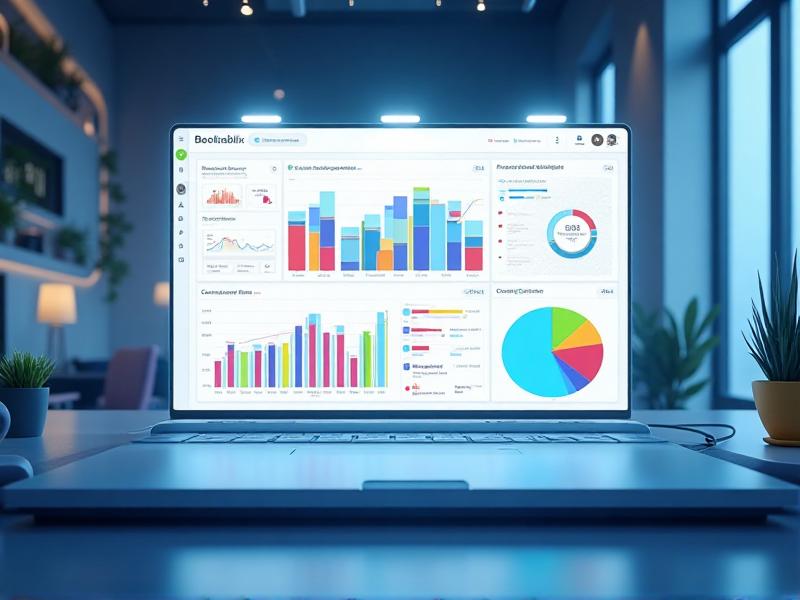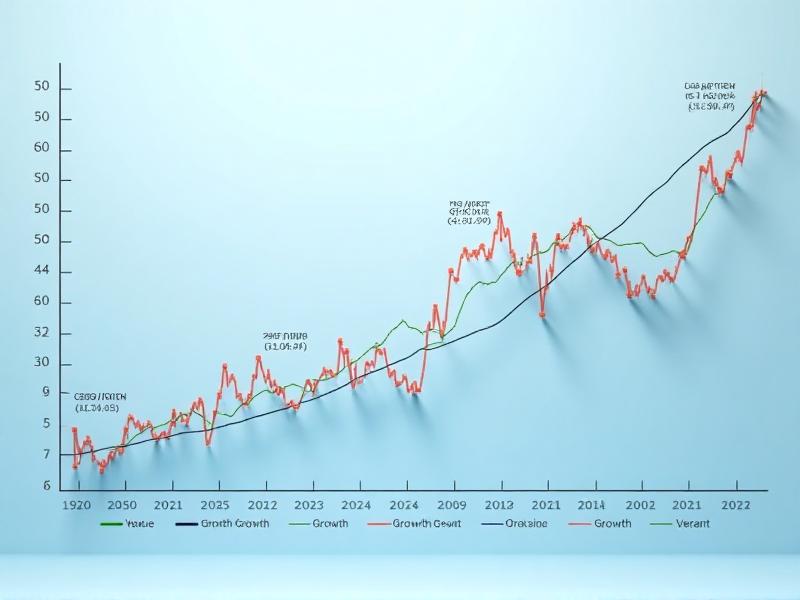
How to Invest in Bonds for Stability and Income

The Role of Research in Making Informed Investments

How to Use ETFs for Environmental, Social, and Governance (ESG) Investing

How to Use Options for Income Generation
How to Save Money on Home Energy Bills
Apr 24, 2025 By Juliana Daniel
Understanding Your Home Energy Usage
Before you can effectively reduce your home energy bills, it's essential to understand where your energy is going. Most households consume energy in several key areas: heating and cooling, lighting, appliances, and electronics. By identifying which areas consume the most energy, you can target your efforts more effectively.
Start by conducting an energy audit. Many utility companies offer free or discounted energy audits to their customers. During an audit, a professional will assess your home's energy usage and provide recommendations for improvements. Alternatively, you can perform a DIY audit by examining your energy bills and identifying patterns or spikes in usage.
Another useful tool is a home energy monitor. These devices provide real-time data on your energy consumption, allowing you to see which appliances or systems are using the most power. By understanding your energy usage, you can make informed decisions about where to cut back and invest in energy-efficient upgrades.
Upgrading to Energy-Efficient Appliances
One of the most effective ways to save money on your energy bills is by upgrading to energy-efficient appliances. Older appliances tend to be less efficient and consume more energy than their modern counterparts. When shopping for new appliances, look for the Energy Star label, which indicates that the product meets strict energy efficiency guidelines set by the U.S. Environmental Protection Agency.
Refrigerators, washing machines, dishwashers, and HVAC systems are some of the biggest energy consumers in a home. Replacing these with Energy Star-rated models can lead to significant savings over time. For example, an Energy Star-rated refrigerator uses about 15% less energy than a non-certified model, which can translate to substantial savings on your electricity bill.
While the upfront cost of energy-efficient appliances can be higher, the long-term savings on your energy bills often outweigh the initial investment. Additionally, many utility companies offer rebates or incentives for purchasing energy-efficient appliances, further reducing the cost.
Improving Home Insulation and Sealing Leaks
Proper insulation and sealing air leaks are crucial for maintaining a comfortable indoor temperature and reducing energy costs. Inadequate insulation allows heat to escape during the winter and enter during the summer, forcing your HVAC system to work harder and consume more energy.
Start by inspecting your home's insulation. Check the attic, walls, and floors to ensure they are adequately insulated. If you find areas with insufficient insulation, consider adding more. Common insulation materials include fiberglass, cellulose, and spray foam, each with its own advantages and applications.
Next, identify and seal air leaks around windows, doors, and other openings. Use weatherstripping or caulk to seal gaps and prevent drafts. Additionally, consider installing storm windows or doors for added insulation. By improving your home's insulation and sealing leaks, you can reduce the load on your HVAC system and lower your energy bills.
Optimizing Heating and Cooling Systems
Heating and cooling account for a significant portion of a home's energy consumption. Optimizing your HVAC system can lead to substantial savings on your energy bills. Start by scheduling regular maintenance for your heating and cooling systems. A well-maintained system operates more efficiently and has a longer lifespan.
Consider upgrading to a programmable or smart thermostat. These devices allow you to set temperature schedules based on your daily routine, ensuring that your HVAC system only runs when needed. For example, you can set the thermostat to lower the temperature when you're away from home and raise it before you return.
Another way to optimize your HVAC system is by using ceiling fans to circulate air. In the summer, ceiling fans can create a cooling breeze, allowing you to set your thermostat a few degrees higher. In the winter, reverse the fan's direction to push warm air down from the ceiling. By optimizing your heating and cooling systems, you can maintain a comfortable indoor environment while reducing energy consumption.
Switching to LED Lighting
Lighting is another area where you can achieve significant energy savings. Traditional incandescent bulbs are highly inefficient, converting most of the energy they consume into heat rather than light. Switching to LED (light-emitting diode) bulbs can reduce your lighting energy consumption by up to 75%.
LED bulbs are not only more energy-efficient but also have a longer lifespan, lasting up to 25 times longer than incandescent bulbs. While the initial cost of LED bulbs may be higher, the long-term savings on your energy bills and replacement costs make them a worthwhile investment.
In addition to replacing bulbs, consider using dimmer switches and motion sensors to further reduce energy usage. Dimmer switches allow you to adjust the brightness of your lights, while motion sensors ensure that lights are only on when needed. By switching to LED lighting and implementing smart lighting controls, you can significantly reduce your home's energy consumption.
Utilizing Renewable Energy Sources
Harnessing renewable energy sources is an excellent way to reduce your reliance on traditional energy providers and lower your energy bills. Solar panels are one of the most popular options for homeowners looking to generate their own electricity. By installing solar panels on your roof, you can capture sunlight and convert it into usable energy for your home.
While the initial cost of solar panel installation can be high, many governments and utility companies offer incentives, tax credits, and financing options to make it more affordable. Additionally, solar panels can significantly reduce or even eliminate your electricity bills, depending on your energy usage and the size of your solar system.
Other renewable energy options include wind turbines and geothermal systems. Wind turbines can generate electricity in areas with consistent wind, while geothermal systems use the earth's natural heat to provide heating and cooling. By utilizing renewable energy sources, you can reduce your carbon footprint and achieve long-term savings on your energy bills.
Adopting Energy-Saving Habits
In addition to making physical upgrades to your home, adopting energy-saving habits can further reduce your energy bills. Simple changes in your daily routine can add up to significant savings over time. For example, turn off lights and unplug electronics when not in use, as many devices continue to draw power even when turned off.
Wash clothes in cold water and air-dry them whenever possible. Heating water accounts for a large portion of a washing machine's energy consumption, so using cold water can lead to substantial savings. Additionally, avoid overloading your dryer, as this can reduce its efficiency and increase drying time.
Finally, be mindful of your thermostat settings. Lowering your thermostat by just a few degrees in the winter and raising it in the summer can lead to noticeable savings on your heating and cooling costs. By adopting energy-saving habits, you can reduce your energy consumption without sacrificing comfort.
Investing in Energy-Efficient Windows
Windows play a significant role in your home's energy efficiency. Poorly insulated or outdated windows can allow heat to escape during the winter and enter during the summer, leading to higher energy bills. Investing in energy-efficient windows can help regulate your home's temperature and reduce the load on your HVAC system.
Look for windows with double or triple glazing, low-emissivity (Low-E) coatings, and gas fills between the panes. These features help reduce heat transfer and improve insulation. Additionally, consider the window frame material. Vinyl, fiberglass, and wood frames offer better insulation than aluminum frames.
While the cost of energy-efficient windows can be high, the long-term savings on your energy bills and increased comfort make them a worthwhile investment. Many utility companies also offer rebates or incentives for upgrading to energy-efficient windows, further offsetting the cost.
Monitoring and Adjusting Your Energy Usage
Once you've implemented energy-saving measures, it's important to monitor your energy usage and make adjustments as needed. Regularly review your energy bills to track your consumption and identify any unexpected increases. If you notice a spike in usage, investigate the cause and take corrective action.
Consider using a home energy management system (HEMS) to gain more control over your energy consumption. These systems provide detailed insights into your energy usage and allow you to remotely control appliances, lighting, and HVAC systems. Some HEMS also offer personalized recommendations for further reducing your energy consumption.
Finally, stay informed about new energy-saving technologies and practices. The field of energy efficiency is constantly evolving, and staying up-to-date can help you identify new opportunities for savings. By monitoring and adjusting your energy usage, you can ensure that your efforts to save money on home energy bills are effective and sustainable.

How to Use Budgeting Apps to Manage Your Money

Unforgettable Pilgrimages: Top Temples in Andhra Pradesh

The Financial Impact of Social Comparisons

How to Use Blockchain for Identity Verification

How to Choose the Right Hostel: 6 Tips to Avoid Bad Stays

How to Use Robo-Advisors for Retirement Planning

The Benefits of Investing in High-Dividend Stocks

How to Invest in Value Stocks for Long-Term Gains
Advertisement
